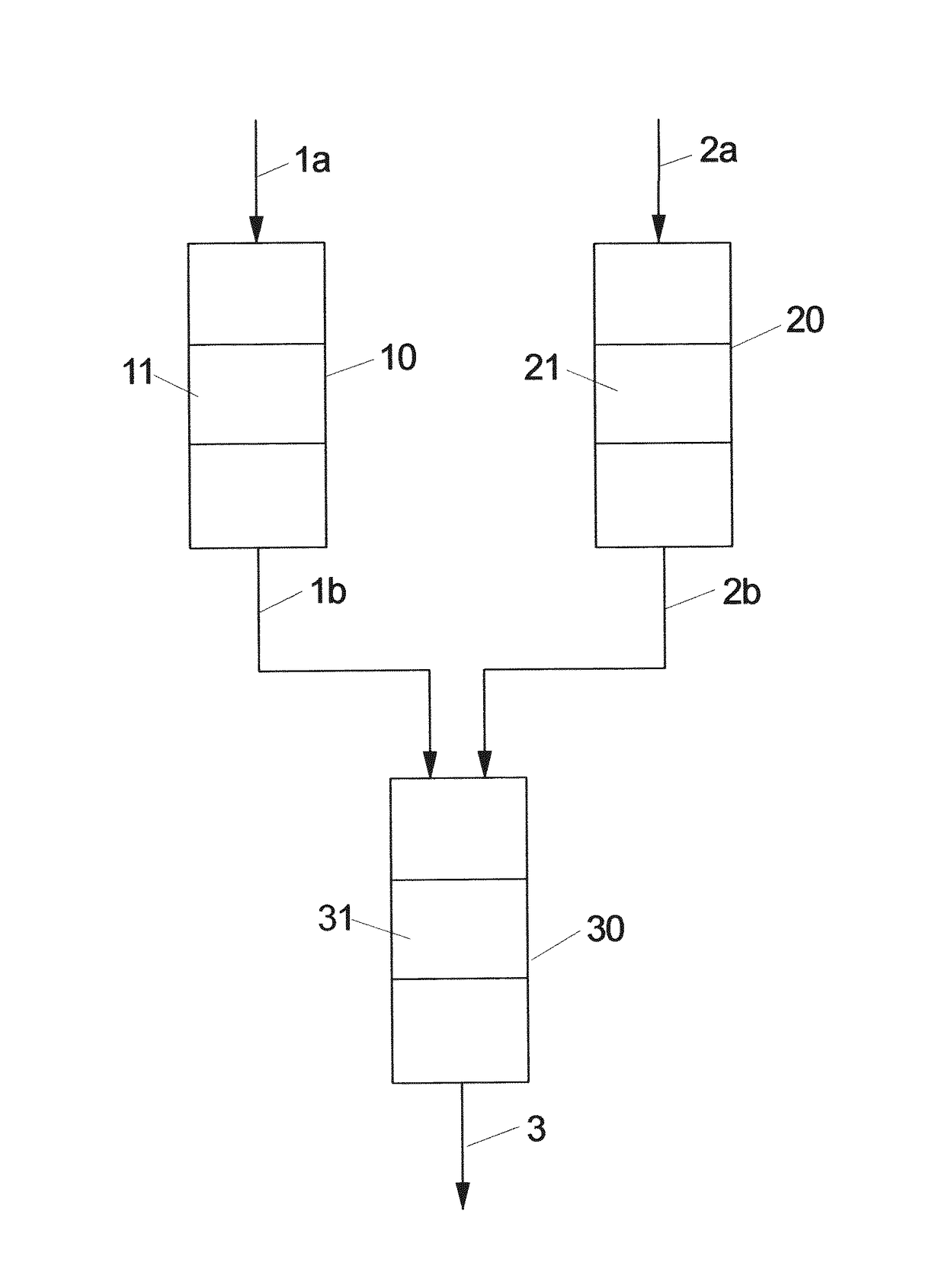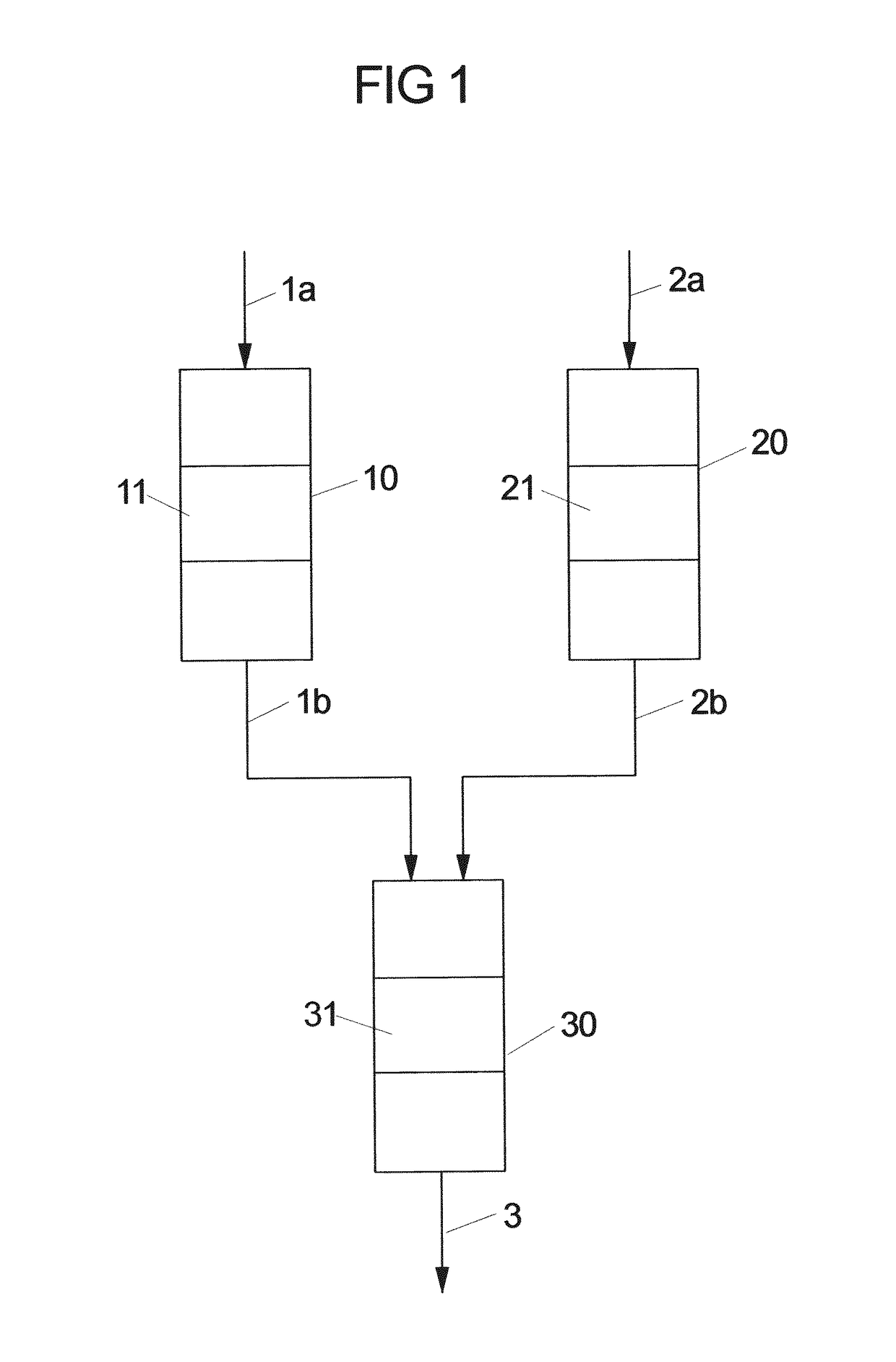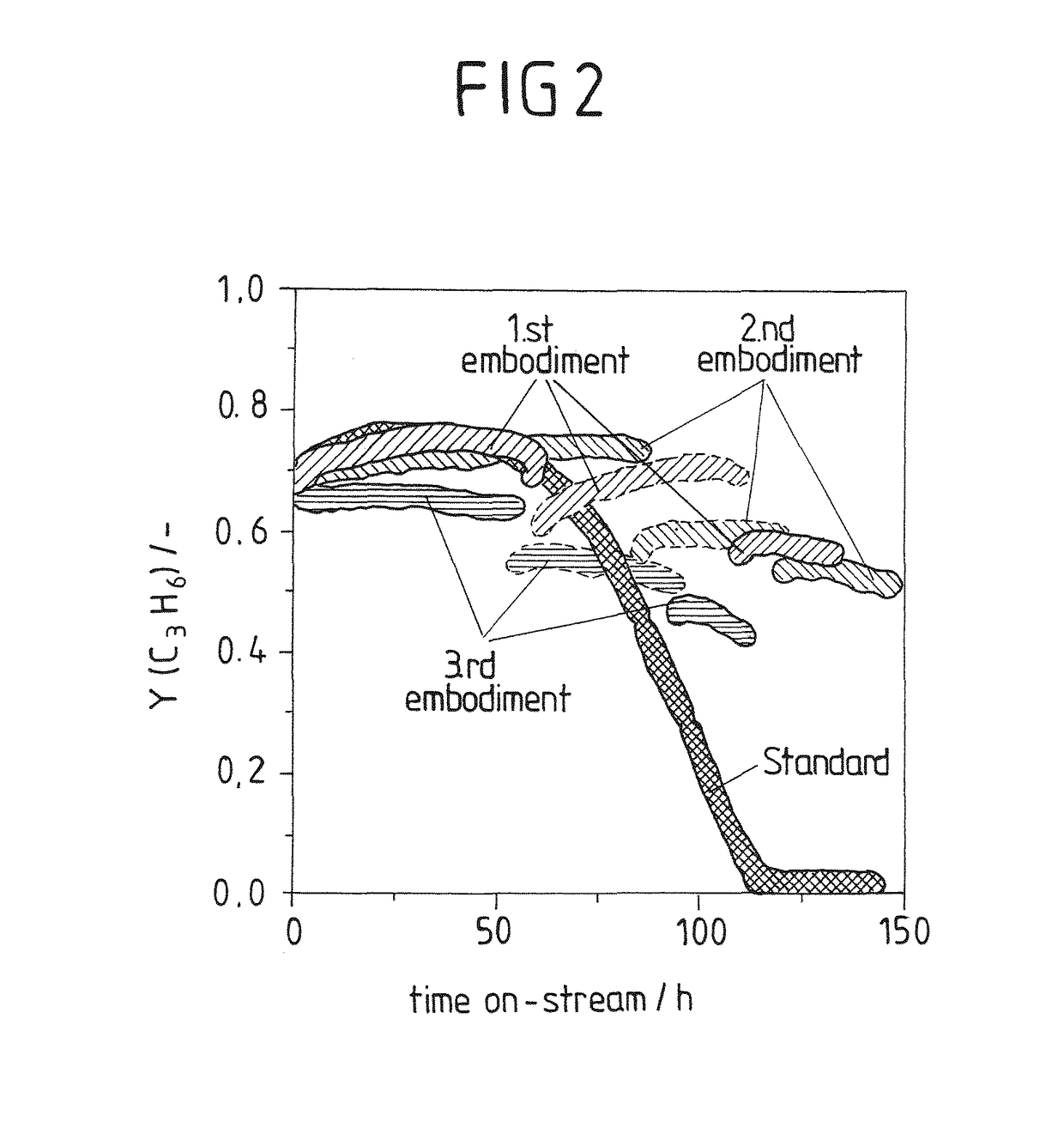Process for olefin production by metathesis and reactor system therefor
a technology of metathesis and olefin, which is applied in the direction of catalysts, organic chemistry, hydrocarbons, etc., can solve the problems of limiting the overall reactor performance, reducing the activity of known technical metathesis catalysts for propene production, and reducing the overall reactor performan
- Summary
- Abstract
- Description
- Claims
- Application Information
AI Technical Summary
Benefits of technology
Problems solved by technology
Method used
Image
Examples
example 1
Process with One Reactor, State of the Art
[0092]Catalytic tests were performed in a tubular (4 mm i.d.) continuous-flow fixed-bed reactor made of quartz at 1.4 bar and 300° C. using a C2H4:trans-2-C4H8:N2=64.3:25.7:10 feed. C2H4 (Linde, purity>99.95%), trans-2-C4H8 (Linde, purity>99.0%) were extra purified with molsieve 3A, while “oxysorb” (Resteck) and molsieve 3A were applied for purifying N2 (Air Liquide, purity>99.999%).
[0093]The main catalyst is a physical mixture of MgO (0.3-0.7 mm) and WOx / SiO2 (0.3-0.7 mm) with a weight ratio of 3.0. The MgO (0.3-0.7 mm) was additionally used as a pre-bed arranged upstream. Both beds were placed within the isothermal zone of the reactor. The weight hourly space velocity (WHSV) was of 1.9 h−1 related to trans-2-C4H8 and the main catalyst.
[0094]Before catalytic testing, the following pre-treatment was performed. The reactor was heated in a flow of pure nitrogen up to 400° C. with a heating rate of 5 K·min−1. The temperature was held constant f...
first embodiment
Example 2: First Embodiment According to the Invention
[0096]The test was carried out under reaction conditions and catalyst bed pre-treatment as described in Example 1 but using 3 separated reactors: 2 for MgO pre-bed and 1 reactor for the main bed, consisting of MgO:(WOx / SiO2)=3:1. The ratio of MgO pre-bed to the main bed was 0.21 (150 mg MgO, 716 mg main catalyst bed).
[0097]The results are summarized in the diagram of FIG. 2. The open and solid symbols in this plot distinguish between operation with 1st and 2nd MgO pre-beds without interrupting the flow through the main reactor. The reaction was initially run with the 1st MgO pre-bed until observing the beginning of decrease in propene yield (about 60 h on stream).
[0098]Then, the reaction feed was redirected from this pre-bed to the fresh 2nd MgO pre-bed without interrupting the flow through the main reactor. After approximately further 60 hours on stream and diminishing value of propylene yield, the freshly regenerated MgO pre-be...
second embodiment
Example 3: Second Embodiment According to the Invention
[0099]The test was carried out as described in Example 2 but using ratio of MgO pre-bed to main catalyst bed MgO:(WOx / SiO2) of 0.42 (300 mg pre-bed, 716 mg main catalyst bed). The propene yield with time on stream is shown in FIG. 2.
PUM
| Property | Measurement | Unit |
|---|---|---|
| Temperature | aaaaa | aaaaa |
| Temperature | aaaaa | aaaaa |
| Temperature | aaaaa | aaaaa |
Abstract
Description
Claims
Application Information
 Login to View More
Login to View More - R&D
- Intellectual Property
- Life Sciences
- Materials
- Tech Scout
- Unparalleled Data Quality
- Higher Quality Content
- 60% Fewer Hallucinations
Browse by: Latest US Patents, China's latest patents, Technical Efficacy Thesaurus, Application Domain, Technology Topic, Popular Technical Reports.
© 2025 PatSnap. All rights reserved.Legal|Privacy policy|Modern Slavery Act Transparency Statement|Sitemap|About US| Contact US: help@patsnap.com



